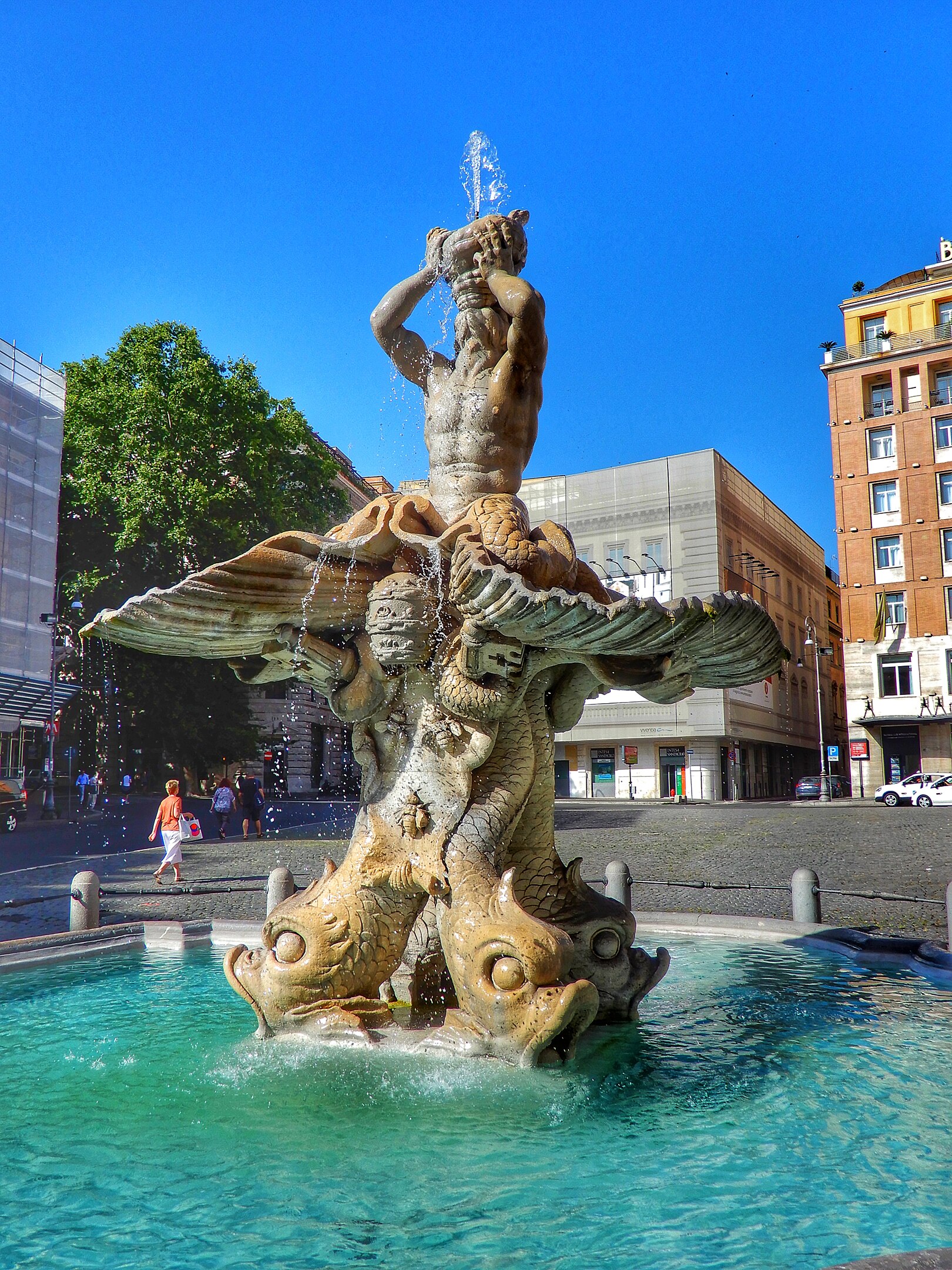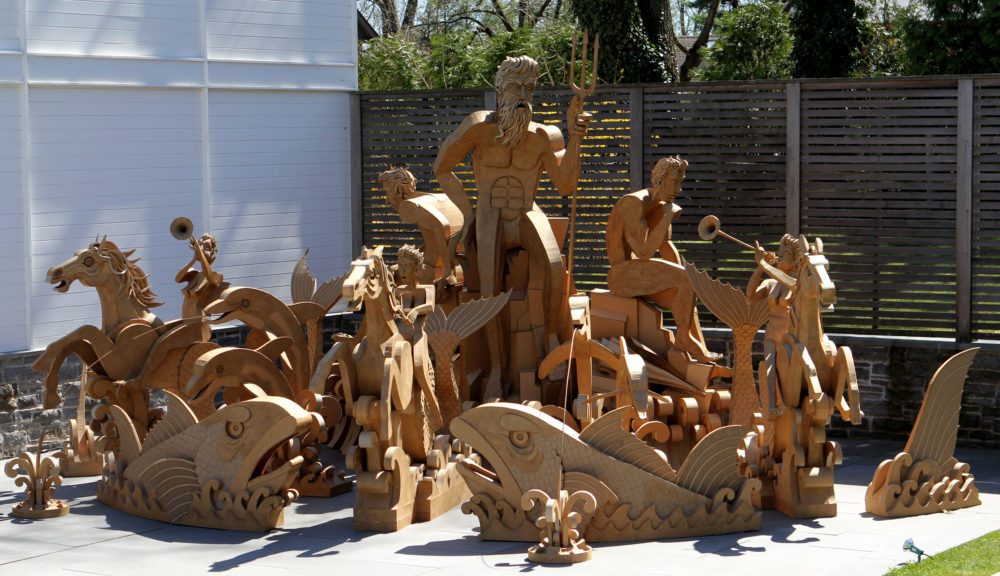From the Triton Fountain in the Piazza Barberini to the Fountain of the Four Rivers in Piazza Navona, sculptor Gian Lorenzo Bernini’s glorious public fountains have impressed visitors to Rome for centuries.
Bernini angled for immorality when carving his Baroque masterpieces from marble.

Image by Trdinfl, via Wikimedia Commons
Eternity occupied artist James Grashow’s mind, too, throughout four years of toil on his Corrugated Fountain, a masterpiece of planned obsolescence.
“All artists talk about process”, he ruminates in an outtake from Olympia Stone’s documentary, The Cardboard Bernini, “but the process that they talk about is always from beginning to finish:
Nobody really talks about full term process to the end, to the destruction, to the dissolution of a piece. Everything dissolves in an eternity. I’d like to speak to that.

He picked the right medium for such a meditation — corrugated cardboard, sourced from the Danbury Square Box Company. (The founders chose its name in 1906 to alert the local hatting industry that they did not traffic in round hat boxes.)
Grashow challenged himself to make something with cardboard and hot glue that would “outshine” Bernini before it was sacrificed to the elements:
Water and cardboard cannot exist together. The idea of a paper fountain is impossible, an oxymoron that speaks to the human dilemma. I wanted to make something heroic in its concept and execution with full awareness of its poetic absurdity. I wanted to try to make something eternal out of cardboard… the Fountain was an irresistible project for me.
The documentary catches a mix of emotions as his meticulously constructed Baroque figures — nymphs, horses, dolphins, Poseidon — are positioned for destruction on the grounds of the Aldrich Contemporary Art Museum.
A young boy at the exhibition’s opening is untroubled by the sculpture’s impending fate:
I think it’s cool, coz it’s made out of trees and it’s returning to mush…or whatever you want to call it.
His buddy finds it hard to share his enthusiasm, gesturing helplessly toward the monumental work, his voice trailing off as he remarks, “I don’t see why you would want that to…”
An adult visitor unashamedly reveals that she had been actively rooting for rain.
When a storm does reduce the sculpture to an Ozymandian tableau a short while later, Grashow suspects the project was ultimately a self portrait, “full of bluster and bravado, hollow and melancholy at its core, doomed from the start, and searching for beauty in all of the sadness.”
Then he and a helper cart what’s left off to a waiting dumpster.

His daughter, Rabbi Zoë Klein, likens the Corrugated Fountain’s impermanence to the sand mandalas Tibetan monks spend months creating, then sweep away with little fanfare:
…the art is about just the gift of creation, that we have this ability to create, that we celebrate that, not that we can conquer time, but rather we can make the most of the time we have by making it beautiful and meaningful, living up to our potential..
Grashow speaks tenderly of the ephemeral material he uses frequently in his work:
It’s so grateful for the opportunity to become something, because it knows it’s going to be trash.
Watch The Cardboard Bernini here.
See more of James Grashow’s cardboard works here.
Related Content
Designer Creates Origami Cardboard Tents to Shelter the Homeless from the Winter Cold
Kraftwerk’s “The Robots” Performed by German 1st Graders in Cute Cardboard Robot Costumes
– Ayun Halliday is the Chief Primatologist of the East Village Inky zine and author, most recently, of Creative, Not Famous: The Small Potato Manifesto and Creative, Not Famous Activity Book. Follow her @AyunHalliday.


Leave a Reply